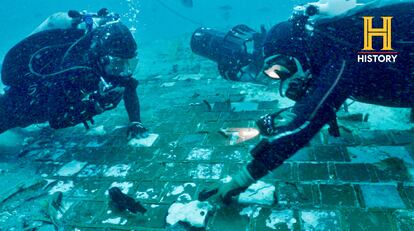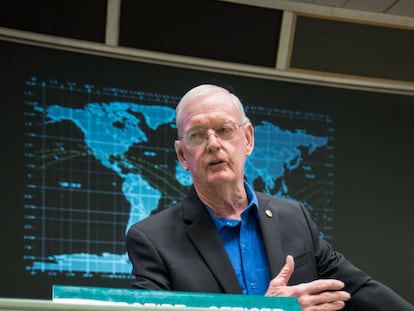Part of NASA space shuttle ‘Challenger’ found by documentary team off Florida coast
Divers searching for the wreckage of a WWII aircraft discover a 4.5-meter segment of the spacecraft, which exploded shortly after launch in January 1986

Divers working with a television documentary team searching for the wreckage of a World War II plane off the coast of Florida have instead found part of the space shuttle Challenger, which exploded 73 seconds after launching from Cape Canaveral on January 28, 1986, killing all seven astronauts aboard. NASA said in a statement that divers contacted the US space agency after spotting a large, distinctly modern object largely hidden under sand on the ocean floor and which bore the shuttle’s distinctive insignia. “This discovery gives us an opportunity to pause once again, to uplift the legacies of the seven pioneers we lost, and to reflect on how this tragedy changed us,” NASA Administrator Bill Nelson said. The find is the first time in 25 years that a piece of Challenger has been located.
An investigation carried out by NASA after the tragedy showed “unexpectedly cold temperatures affected the integrity of O-ring seals in the solid rocket booster segment joints,” the agency stated.
The segment of Challenger found by the documentary team, which was preserved at the bottom of the Atlantic, is one of the largest pieces found in the aftermath of the tragedy, NASA has confirmed. In images filming during the discovery, which was made in the spring, two divers reveal the shuttle’s thermal protection tiles, buried beneath the sand. These eight-inch black squares covered the entire underside of the spacecraft to allow it to withstand the searing temperatures it would experience on re-entry into the Earth’s atmosphere.
One of the two divers, Mike Barnette, told AFP that he felt a real “roller coaster ride of emotions” when he realized what he was touching. “When we found it, [there were] a lot of mixed emotions. I’m used to diving on shipwrecks that are decades to centuries old, and not a piece of the space program. This is quite unique.”
The piece of the shuttle located by Barnette and his dive partner is partially buried on the ocean floor. The visible part measures about 4.5 meters and “is one of the largest ever found,” Mike Ciannilli, a NASA employee of 25 years who worked extensively on the space shuttle program, told AFP.

Nelson confirmed that NASA is determining whether to try and recover the remnant of Challenger and “what additional actions it may take regarding the artifact that will properly honor the legacy of Challenger’s fallen astronauts and the families who loved them,” the agency said on its official website.
The divers who discovered the segment of Challenger off the Florida coast were participating in a History Channel documentary about the Bermuda Triangle, although NASA stated that the find was made in “waters off Florida’s Space Coast, well northwest of the area popularly known as the Bermuda Triangle.” The documentary team was searching for the wreckage of Martin PBM Mariner patrol bomber flying boat that disappeared without trace on December 5, 1945, while searching for a squadron of five US Navy Grumman TBF Avenger torpedo bombers that had gone missing the same day over the Bermuda Triangle.
Tu suscripción se está usando en otro dispositivo
¿Quieres añadir otro usuario a tu suscripción?
Si continúas leyendo en este dispositivo, no se podrá leer en el otro.
FlechaTu suscripción se está usando en otro dispositivo y solo puedes acceder a EL PAÍS desde un dispositivo a la vez.
Si quieres compartir tu cuenta, cambia tu suscripción a la modalidad Premium, así podrás añadir otro usuario. Cada uno accederá con su propia cuenta de email, lo que os permitirá personalizar vuestra experiencia en EL PAÍS.
¿Tienes una suscripción de empresa? Accede aquí para contratar más cuentas.
En el caso de no saber quién está usando tu cuenta, te recomendamos cambiar tu contraseña aquí.
Si decides continuar compartiendo tu cuenta, este mensaje se mostrará en tu dispositivo y en el de la otra persona que está usando tu cuenta de forma indefinida, afectando a tu experiencia de lectura. Puedes consultar aquí los términos y condiciones de la suscripción digital.
More information
Archived In
Últimas noticias
Most viewed
- Reinhard Genzel, Nobel laureate in physics: ‘One-minute videos will never give you the truth’
- Oona Chaplin: ‘I told James Cameron that I was living in a treehouse and starting a permaculture project with a friend’
- Pablo Escobar’s hippos: A serious environmental problem, 40 years on
- Why we lost the habit of sleeping in two segments and how that changed our sense of time
- Chevy Chase, the beloved comedian who was a monster off camera: ‘Not everyone hated him, just the people who’ve worked with him’










































